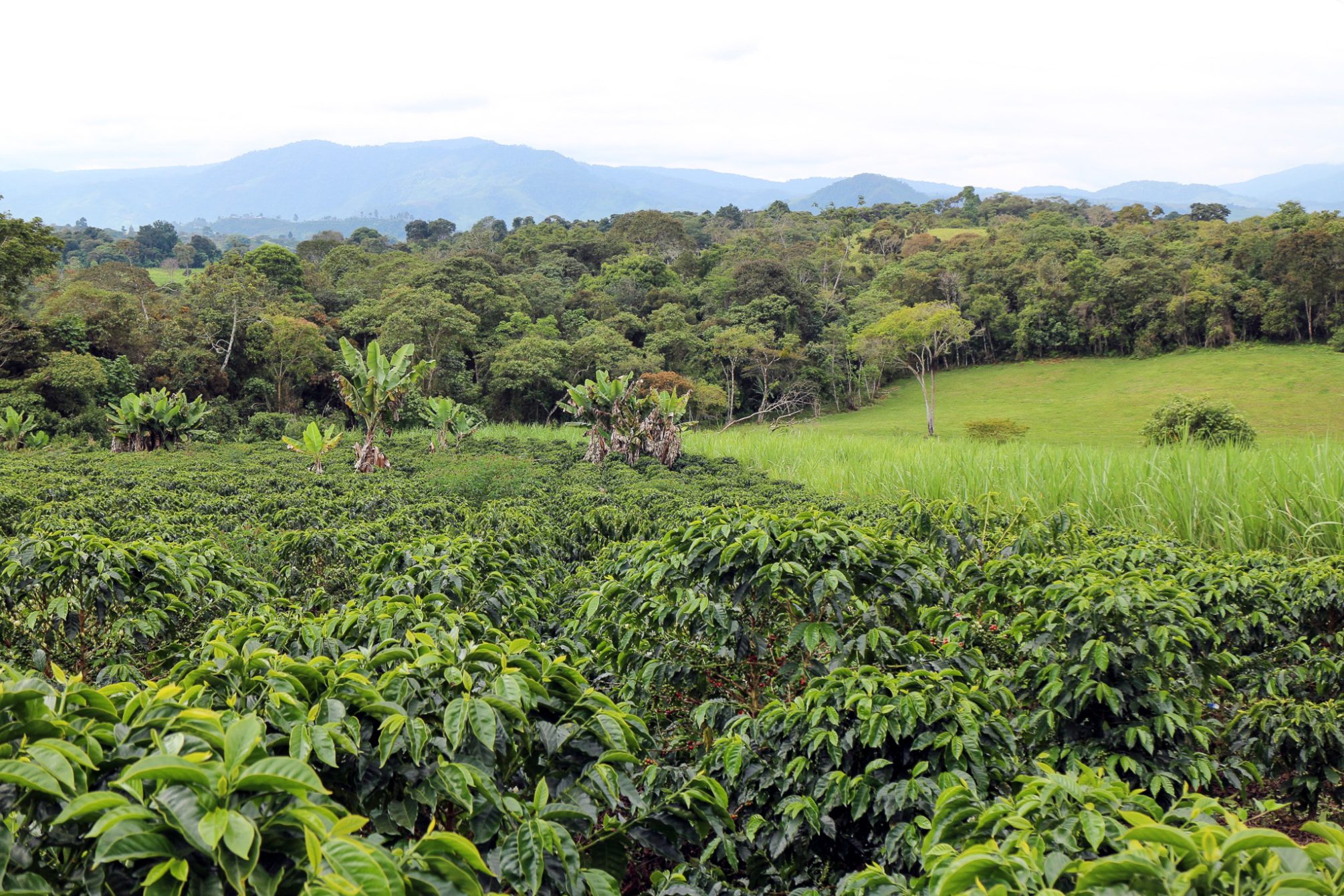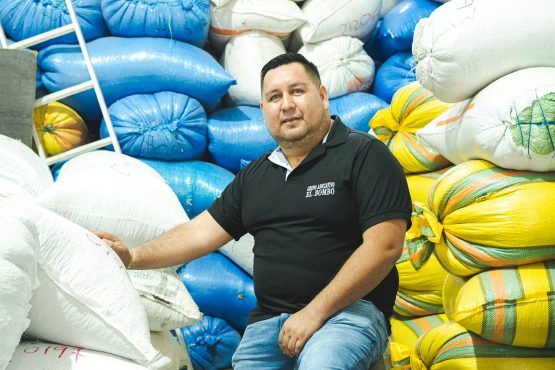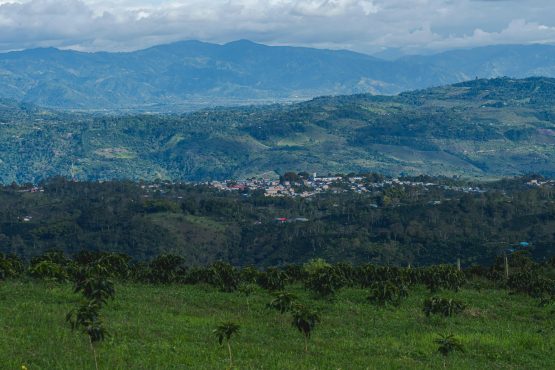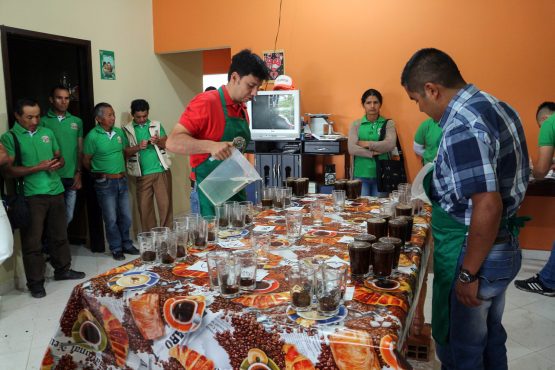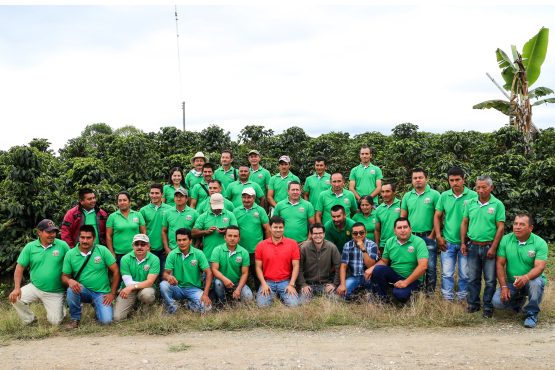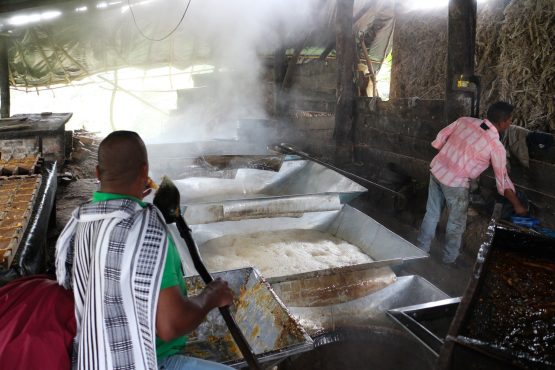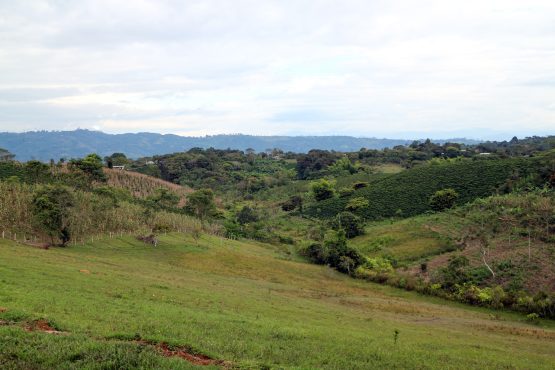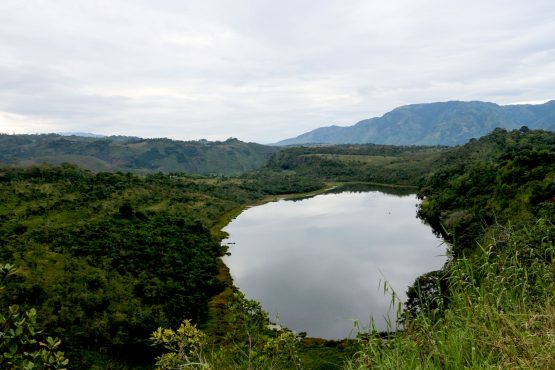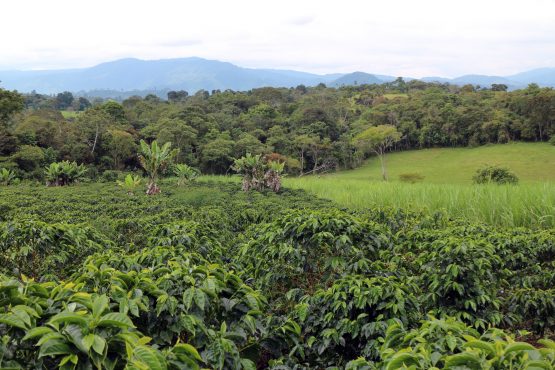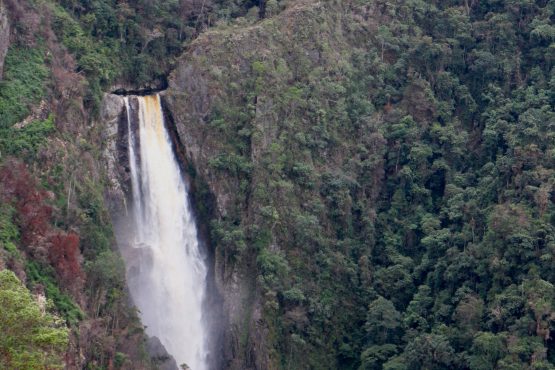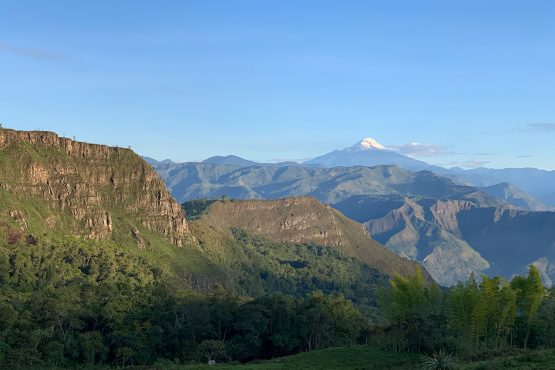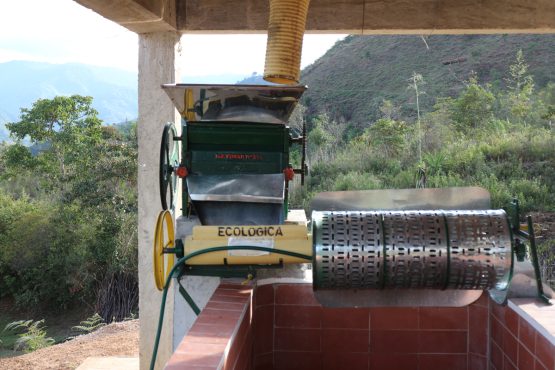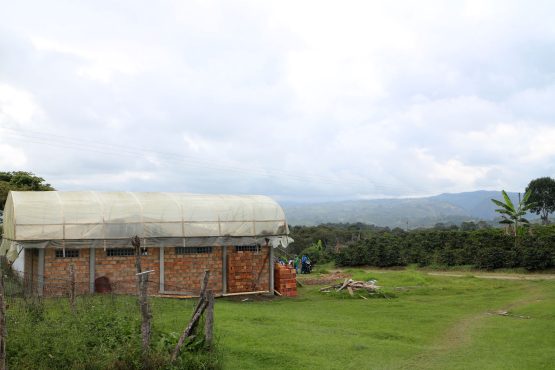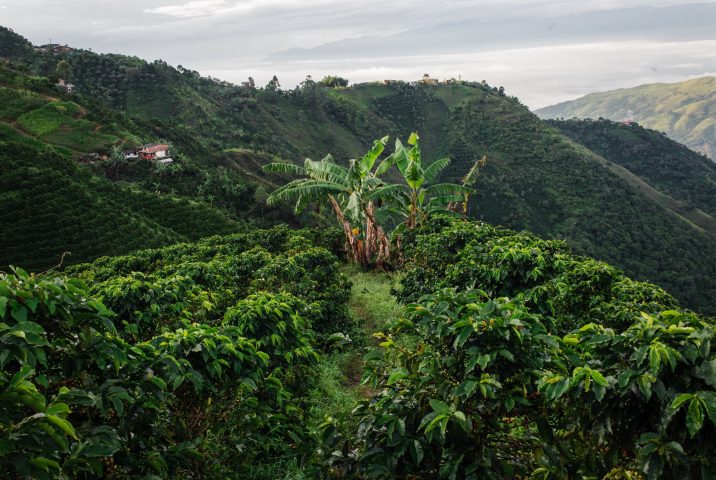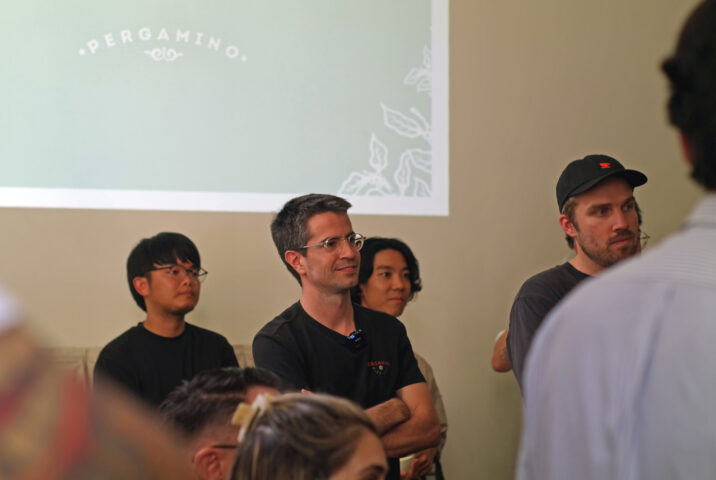Small Producers of El Bombo
Lively and well-structured, with stonefruit sweetness. Mandarin, red grape and milk chocolate.
The special regional blend is made up of coffee from seven members of ASOBOMBO Cooperative, an enterprising coffee association from the town of El Bombo, in the Pitalito municipality of Colombia’s state of Huila. Founded in 2015 by Jhon Díaz and his brother Hernando, the co-op has quickly become one of Pitalito’s best-regarded groups, and has now expanded to support hundreds of local producers.
The town of El Bombo is one of Pitalito’s smallest, with most of the region’s producers farming on a hectare of land, or less. Jhon Díaz, ASOBOMBO’s founder, began growing coffee on half a hectare he and his brothers inherited from their grandmother. The brothers were no strangers to long days on the field, however, as their father, grandfather and great-grandfather all worked as day labourers across Colombia’s coffee regions. Yet the pair hoped to make something of their inheritance, because as Jhon put it, “My brother and I wanted to break that paradigm, we thought there had to be more for us in life.” Following a C price crisis in 2013-14, a childhood friend of the siblings recommended Jhon enter a local competition that awarded high-scoring coffees as a way to earn better earnings from their crop. With little knowledge or preparation, Jhon submitted his coffee — and to his surprise, went on to win the event, fetching a great price for his coffee, plus an added premium once it sold.
Jhon spent the next year attending workshops and preparing himself for the 2015 competition, which he won again, except this time he had a better understanding of why his coffee had received a higher cup score. After being approached by his friends and neighbours, Jhon and 30 other producers decided to establish ASOBOMBO — a coffee cooperative named after their hometown of El Bombo, because Jhon was convinced “Pitalito’s smallest town could grow the region’s greatest coffees; that’s why today, everyone wants to be a part of El Bombo!” On the association’s first year, 20 of its members entered the same local competition, with a whopping 12 of them placing in the top spots. A forward-thinking man, Jhon recognised that competitions could not fund the co-op’s progress long term, and was delighted when he found a buyer that guaranteed the same degree of traceability and transparent pricing structure: Pergamino.
For Léo Henao, Pergamino’s Director of Coffee, Pitalito will always be a special place. Not only did he live here in the early years of his career, it’s also where he met good friend and longtime collaborator Jorge Cuellar of El Encanto. When Léo and Pergamino’s Managing Director Pedro Echavarría met Jhon, they knew they’d found a reliable ally in Pitalito, as ASOBOMBO was set up quite differently to most traditional (and often, complicated to work with) coffee cooperatives who typically received funds on behalf of producers and then split them up evenly. “I believed if you work hard, you deserve the entirety of what you earn,” Jhon explained. “I can’t take a prize someone else won!” Another point of difference between ASOBOMBO and most cooperatives is that, rather than paying a flat stipend, farmers pay a membership fee (that is used to cover general administrative costs) based on how much parchment they deliver, because “a farmer who only owns one hectare of land can’t afford what someone who owns five or six hectares can.” Finally, co-op members aren’t obliged to sell to ASOBOMBO every year if they find a better buyer elsewhere; as Jhon saw it, “we wanted people to work with us because they wanted to, not because they had to.”
Since 2016, ASOBOMBO and Pergamino have worked closely together harvest after harvest. One year, when the co-op decided they needed to build a QC lab, they collected a few kilos of each producer’s best coffees and sold them to Pedro and Léo, with the goal of fetching and even higher price for it. Pergamino didn’t only secure that lot, but they sold it across their Medellín cafés, and took an added collection from their patrons, allowing ASOBOMBO to establish their own facilities without taking on any debt or requesting government funding. Since then, the cooperative has continued to improve the quality of their crop year-on-year, elevating the name of El Bombo not just in Huila, but also across all of Colombia. “My children no longer say they want to leave town, or avoid coffee when they grow up. They want to work with it and are really involved in the family farm — sometimes they even help us pick. They want to learn to cup and travel with me when I visit producers in other regions.”
ABOUT PITALITO
Located in Huila’s southwest, nearly 200km away from capital city Neiva, Pitalito is part of the Great Colombian Massif, sitting alongside the Magdalena River. Situated in a plateau above the Valley of Laboyos, Pitalito boasts a very strong agricultural sector, with corn, legumes and passionfruit its most important food crops. The municipality is also one of Colombia’s largest coffee-producing regions, thanks to its unique topography of gentle, rolling hills, which are much easier to farm than the steep cliffs common in many of the country’s coffee regions. This allows growers to plant more trees per hectare, and makes the harvest easier to manage, as picking is less challenging.
Farms in Pitalito are mainly planted with Caturra, a variety that was propagated heavily during the 1970s and 1980s when most local farms were established, along with hybrids Castillo and Colombia, which were introduced by Colombia’s Coffee Federation (FNC) in the 1980s, as part of the country’s efforts to reduce the incidence of coffee leaf rust without affecting cup quality. Recognising that a rare varieties like Pink Bourbon (which have direct lineage to Ethiopian heirloom varieties) perform well in the local climate and fetch higher premiums, many ASOBOMBO members have recently planted the variety. Producers who contributed to this lot also farm coffee following traditional techniques, applying fertilisers around three times a year after manual weeding, and rarely using pesticides.
Most producers in Pitalito only grow coffee at their farms and tend to other vegetables and fruit in parcels of land in nearby state of Caquetá. Towards the end of the coffee harvest, producers will relocate to complete the harvest of their food crops. Recognising this is exhausting, Pergamino have focused on teaching producers they work with in the region to intercrop fruit and vegetables with coffee, thereby maximising their land and providing year-round sustenance from their primary site.
Beyond the delicious produce and coffee the region is known for, Pitalito, and the towns that surround it, are lands of great historical significance. Prior to the Spanish invasion of Colombia, the area was the traditional home of several nations and groups, including the Guachico, Totalco, Laboyo, Lacaco, Guarapa and Totalco people. The region has numerous waterways that run parallel to and eventually feed into, the Magdalena River (which runs from Huila all the way to the Caribbean Sea), making it a key location for trade and transport routes that were also used by larger indigenous nations like the Timana, Andaquí and Yalcón. Following the region’s brutal conquest and the subsequent demise of many of its indigenous peoples, vestiges of the area’s rich history can still be found at the various national parks and archaeological sites that are found throughout the area, such as the Salto de Bordones waterfall, which is the origin of many local myths and stories.
Today, this corner of Huila is home to several protected indigenous reserves, made up of nations who re-settled here following colonisation. These resguardos operate under their own rule of law, independently of the Colombian government. Its communities are dedicated to sustenance farming of traditional crops like yuca, beans and corn, with families and neighbours trading amongst themselves (rather than using money) to protect their food sovereignty and independence.
ABOUT HUILA
The department of Huila is located in the southwest of Colombia. It is framed by the Central and Eastern ranges of the Andes, with most of the region sitting within the Magdalena Valley. The area is renowned for the quality of its coffee, and in 2013 it received the Denomination of Origin status. Coffee production in Huila belongs to an ecosystem of subtropical, very humid mountain forest. The year-round distribution of rainfall, rich soil and temperature allow exceptional coffee to be cultivated at elevations of up to 1,900 meters above sea level almost throughout the whole year. The state is also the home of Colombia’s largest volcano, Nevado del Huila, which is also visible from locations in Cauca and Tolima.
Huila is one of the largest coffee-producing regions in the country, however coffee farms are overwhelmingly small-scale, with most farmers owning on average just 1.5 hectares of land. Alongside coffee they also grow rice, raise cattle, and farm fish. Our export partners for this coffee, Pergamino, have worked hard commercialise specialty-grade coffee throughout Huila, and have uncovered some stunning coffees and very dedicated producers in the process. They work closely with the producers to give them feedback on their coffees (provided by Pergamino’s expert team of cuppers) and provide top up payments when the coffee is sold at a higher premium.
Head here to learn more about the work of Pergamino.
HOW THIS COFFEE WAS PROCESSED
This lot was selectively hand-harvested and processed by individual families at their farms’ ‘micro-beneficio’ (mill) using the washed method.
At the end of each day, cherries were hand-sorted and left to pre-ferment for up to 48 hours. This was done using permeable nylon sacks, which allow for airflow around the coffee cherry, keeping the internal temperature low and stable. Once bagged, each contributor carefully placed the cherries in a cool, dry place to protect them from the elements, as high temperatures can accelerate fermentation and introduce undesirable flavours. Fermentation times in El Bombo are not standardised, instead depending on that day’s workflow and the volume of cherry harvested. Pitalito’s cool climate allows farmers to collect 1-2 days’ worth of pickings before they need to pulp and wash the cherries, streamlining operations without risking over-fermented flavours in the final cup.
The cherry was then pulped using a small electric pulper and then placed into a fermentation tank for up to 48 hours. Because of the region’s cooler temperatures, producers tend to ferment the coffees for longer than usual and will often blend several days’ worth of pickings over a two to three day period. Every day freshly picked cherry is pulped and added to the mix, which lowers the pH level and – along with the cooler temperatures – allows for an extended fermentation process. This fermentation process contributes to a vibrant, winey acidity in the coffee’s cup profile.
Following fermentation, the coffee was washed and then carefully sun-dried over 10–18 days. Once dry, the coffee was delivered to Pergamino’s warehouse, where it was cupped and graded, and then rested in parchment until it was ready for export.
